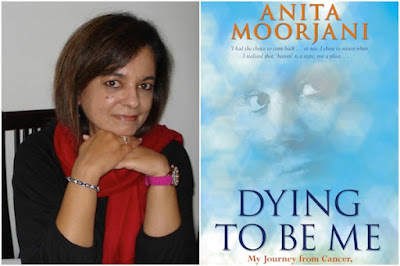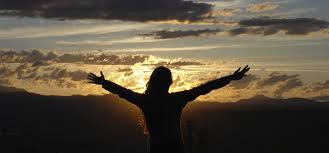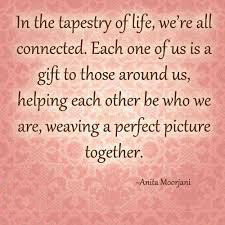Over the years, I’ve read several articles about the similarities between Kundalini Rising and Near Death Experience (NDE). The similarities were not obvious to me until I read Anita Moorjani’s book “Dying To Be Me” which described her journey from cancer, to near death, and then to true healing.
I experienced this life-death decision during my Kundalini Rising process, a willingness to accept full personal responsibility, to embrace the consequences of the decision, irrespective of the outcome. This “letting go” requires an insurmountable amount of trust. Where does this trust come from?
It is this outpouring of love or bliss, this call to oneness that becomes the source of trust that allow us to abandon all previous false notions of comfort and security to embrace the uncertainty of what is to follow.
The release of Kundalini energy in the subtle body system undertakes the systematic process of renovating and restoring, not only of the subtle body, but the physical body as well. It not only gives us an awareness of our intended perfect blueprint, but also begins to slowly erode the obstacles that prevent us from attaining it.
Most people would look at life differently if faced with a disease causing death, only to return from that condition to full health. Anita described this return and the effect it had on her with imagery and description that impacts powerfully on the reader. But what surprised me most was its similarity to the life-changing experience of Kundalini Rising. While reading Chapter 12 called “Seeing Life With New Eyes” and Chapter 16 called “Infinite Selves and Universal Energy,” it was as if I was reading my own story.
Reading this book lead me to ponder the question: What is it about these two experiences that they should lead to a similar outcome or effect, even though they start at very different points? Let me summarize the conclusions of my pondering on this question:
1. Both experiences involve a surrender. Anita described this surrender as a “letting go,” and it wasn’t just a letting go of her body riddled by cancer and nearing death. More importantly, it was a letting go of all the conditioning, attitudes and human constructs created during her lifetime that kept her a prisoner (in a sense) to what she perceived to be the source of happiness, comfort and security. In her book, she affirmed many times that it was her previous attitudes, constructs and conditioning that were influential in causing the cancer in her body in the first place. This surrender, whether a NDE or Kundalini Rising, involves a life-death decision; and with that decision comes a willingness to:
- let go of many of our deeply ingrained beliefs caused by a lifetime of conditioning,
- accept what comes.
I experienced this life-death decision during my Kundalini Rising process, a willingness to accept full personal responsibility, to embrace the consequences of the decision, irrespective of the outcome. This “letting go” requires an insurmountable amount of trust. Where does this trust come from?
2. Both experiences involve an incredible outpouring of love or bliss, a sense of oneness and unity with all things, an encounter with the sacred. It is this outpouring of love and bliss, this sense of oneness that entices us away from our self-imposed prison walls that served only to create a sense of separateness.In Chapter 16, Anita starts out:
“During my NDE, it felt as if I were connected to the entire universe and everything contained within it; and it seemed that the cosmos was alive, dynamic, and conscious. I found that every thought, emotion, or action I made while expressing through the physical body had an effect on the Whole. In fact, in that realm of Oneness, it felt as though the whole universe were an extension of me. This realization has, of course, dramatically changed the way I view things.”
3. Both experiences result in a whole new way of seeing and of being. The attitudes, conditioning, and constructs of the old self are now seen for what they are. It is as if an inner searchlight has come on, and what was previous looked upon as a concrete reality is now seen for the illusion that it is. A new way of seeing the world is born and the old way crumbles away. Mind-you, many of our old habits are still there, but with the guidance from our new searchlight, we more easily see them for what they are, and abandon what is unnecessary more quickly.Again, Anita describes it well:
“Becoming entrenched in beliefs that no longer serve us can keep us locked in a state of duality and put us in a constant state of judgement. What we endorse is considered 'good' or 'positive,' and what we don’t believe in is not. This also puts us in the position of needing to defend our beliefs when others don’t agree. And when we invest too much of our energy in defense, we become reluctant to let go, even when our ideas no longer serve us. That’s when our beliefs start to own us instead of the other way around.
“Having awareness, on the other hand, just means realizing what exists and what’s possible — without judgement. Awareness doesn’t need defending. It expands with growth and can be all-encompassing bringing us closer to the state of Oneness.”
As we become more mature in our experience of Kundalini Rising, we gain greater trust to work in cooperation with what seems like the universal life-force energy that permeates everything, including ourselves, and in recognizing and letting go of the constructs that no longer serve a purpose.
4. Finally, both experiences lead to greater authenticity and wholeness. As explained by Anita:
“I'm most powerful when I allow myself to be who life intended me to be — which is why my healing occurred only when all conscious action on my past had completely ceased and the life force took over. I am always most powerful when I am working with life rather than against it. Each one of us is a gift to those around us helping each other to be who we are, weaving a perfect picture together. Realizing that I am love was the most important lesson I learned, allowing me to release all fear, and that's the key that saved my life.”








